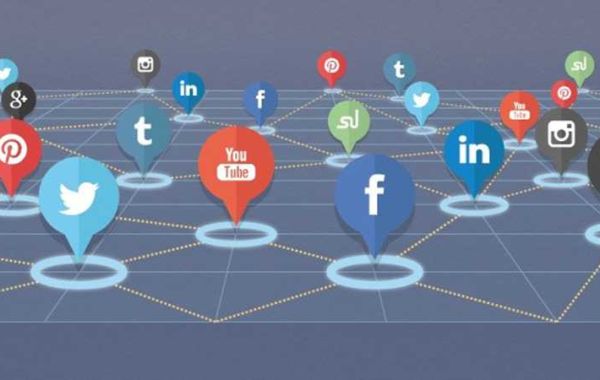Anthropologists, psychologists and sociologists have always tried to study how the surrounding environment can directly or indirectly influence a person.
No one today questions the idea that there is a framework of values, ideals and patterns of behavior structured in a relatively stable system which imposes itself on the subject. A sort of legacy to maintain and pass on: what we more commonly call the socialization process.
But what if these values change? What if this change happens as fast as it has in recent years?
Read More: Cohere Tech
The question is no longer centered only on society, on its ability to accept new structures or on the possibility of assisting in the creation of phenomena of internal fragmentation. The question to ask now is: is society able to adequately adapt to this constant flow of change?
The arrival of the internet in people's lives has been one of the most impacting phenomena in society in the last twenty years; in particular, the advent of social networks has created the perfect conditions for a revolution within a revolution. The changes brought about by these new digital platforms are evident and drastic as they fully involve the social life of those who use them , the way of relating to others, the way of thinking, behaving and even educating
The use of social media in everyday life
To get an even more precise idea, we can examine the data from "Statista Digital Economy Compass" : the global average time spent on social platforms is 142 minutes every day . This value is generated by different but at the same time similar users and uses. Generation Y, the so-called Millennials , certainly represent one of the largest and most skilled catchment areas. A special mention, however, must be made to GenZ , born with, or even after, some social networks. The young people in question are immersed in this new way of experiencing social media: they interact, communicate and contribute to creating new realities and dynamics such as virtual sports and stream platforms.
Millennials and GenZ use social networks not only as a communication tool , but increasingly as a transmission and collaboration tool between networks of people, communities and organizations enhanced by technological features and mobility.
What differentiates communication in Social Media from that of traditional means of communication (television, radio, etc.) is the fact that Social Media allow interactive communication. They give the opportunity to participate in the conversation and not just be passive listeners.
People don't just join online communities, they participate in them by making their own contributions. For example, YouTube users upload more than 400 hours of video every minute (source: Statista ).
The past two years, heavily marked by the pandemic, have made us witness the rise and fall of various social platforms.
Even if every day on Facebook there are more than 4.75 billion posts published and over 4.5 billion likes, the younger generations have now turned their gaze elsewhere, towards new platforms.
Snapchat posts 9,000 photos every second and 10 billion videos are viewed every day. There are 500 million Tweets published daily, which means 6,000 Tweets every second.
Instagram is now one of the most famous and profitable social platforms: dominated above all by those who have yet to turn 35 (source: Statista ).
TikTok has become the most popular social network in the world in just a few years . With 740 million new users registered in 2021 alone, the Chinese media-sharing platform has taken the stage by storm with its short-form videos.
These are just some of the data that prove the massive use of new communication tools, and that perhaps they are no longer new. Let's see how social media influence 3 of the personal spheres of each of us.
The influence of social media in relationships
All social media channels are based on networks of relationships , based on people's ability and willingness to interact freely with other people, organizations or companies; this is why we speak of a culture of participation .
People want to communicate their thoughts online, perhaps even before doing it verbally with those around them. Social networks offer synchronous forms of communication that develop in real time , such as instant messages, whether they are on one's public bulletin board or privately in the chat, but also asynchronous : those interactions that require time, typical for example of forums, where discussions develop over very long timescales.
Regardless of the digital tool used, the greatest opportunity offered by social media is to get to know people who are not physically close to us, but who may instead belong to our own online community: a group of like-minded people who share interests and/or goals. For this reason, the interpersonal relationships that arise online are often more solid than the "offline" ones: what drives people to communicate virtually is the sharing of the same interests and values
The social shopping phenomenon
The act of purchasing can be defined as an intrinsically social act : sharing one's purchasing choices with someone helps us to better evaluate the alternatives and consequently be more sure of one's choices.
We trust the advice of those who accompany us, we rely on their experiences, we sometimes compare them with what other people have told us and in the end we are convinced of our purchase.
What happens when all this happens online? We talk about social shopping : the act of looking for information online during the purchase process. It represents the digital response to the human need, of consumers, to shop together with other people, but with the added value of online technologies: you can get opinions from thousands of people and not just from your own physical network of acquaintances.
The use of the internet is extremely important not only in the final phase, but permeates the entire purchasing process and above all the phase of " assessing the alternatives ". Think about how much research we do before deciding which product is best for satisfying our need.
All the reviews we find online contribute to the creation of quality scores through which we evaluate the possibility of purchasing. Specifically, the use of Social Media channels by sellers to interact and collaborate during the consumer's purchase and use experience is called social commerce , a phenomenon that has found its maximum boost with the arrival of the pandemic in the 2020 .
An increasingly digital education
When we talk about digital supremacy we mean that change in the culture of individuals that has led them to consult digital channels in the first place to communicate, have fun, get information and also receive adequate education
Whether it's Millennials or not, the use and production of knowledge takes place more and more often online. Digital technologies facilitate the search for information: it is sufficient to type the keyword of our interest on Google and select the source that seems most appropriate to us, but at the same time they allow us to view it even without an ad hoc search. Thanks to social networks, it is sufficient to access one's own network of "friends" and immediately a lot of news will appear relating to the interests of the people in our community, and which often coincide with ours.
The ability of Social Media to generate content in real time and the massive use of smartphones and tablets allow people to always be up to date: information is able to reach us at any time of the day and in any place, often comfortably seated on the sofa at home or during a trip on the subway.
These are just some aspects of our life influenced by social media, tools that are now an integral part of our daily lives and that have revolutionized, revolutionize and will revolutionize our social action.








